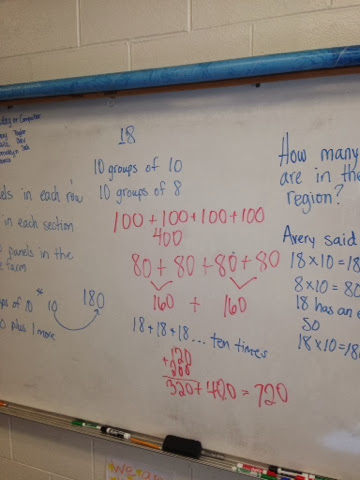Solving word problems has been a thorn in teachers' sides as long as I can remember. We've all attempted to remedy this issue by pointing out key words, saying key information with heavy emphasis and even making students redo the problems until they get it right. With all of these efforts, we still end up with students who cannot independently solve a word problem. Ugh!!
SMP 1 tells us students should always be making sense of the mathematics. As I compare that standard to the practices even I have implemented in my classroom, I realize if this is happening students are not making sense of the mathematics. No wonder when students are working with word problems they just spend the wheel of computation and does what "feels" right. So how can you get students to the place were they are exhibiting SMP 1 when solving word problems?
(Sorry for the sideway images.)
This problem was solved by a 4th grader. When I asked how confident he was with his answer, he felt pretty confident.
I rewrote the problem on another sheet of paper minus the question stem and we started anew. I first asked him to read the problem.
Me: What's the context of the problem? What's happening?
Student: They're ordering pizza and there's pizza left over.
We read the problem again.
Me: What mathematical information is there?
We read the problem a third time.
Me: What mathematical questions could we ask about this problem?
Student: Do you need to add or subtract?
Me: Think again about the context.
I asked the student to compare his answers. He pointed to the 3 wholes and said, "This one is correct. The questions are different."
Me: What's different about them?
Student: This one says 'How much pizza was left over'.
Me: Well what made this problem easier (referring to the problem without the question stem)?
Student: I was able to answer my own question.
This 3-Read strategy changed my perspective on solving word problems. This idea was flushed out in the document Instructional Toolkit for Mathematics shared on Dan Meyer's blog http://blog.mrmeyer.com/wp-content/uploads/OUSDMathInstructionalToolkit2013-14.pdf. When asked was this strategy just for the kids who can comprehend well, I swiftly replied, "No!" Don't limit this strategy to just some kids, expose all students to this strategy, especially those we have trouble with solving problems.

































